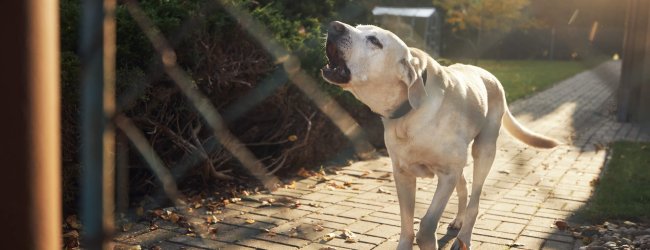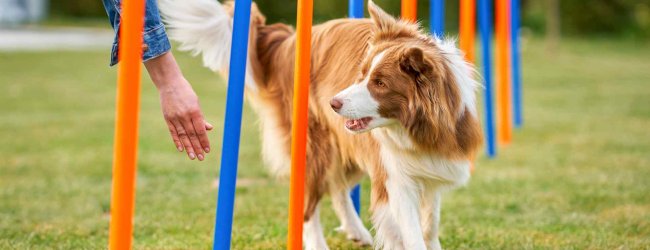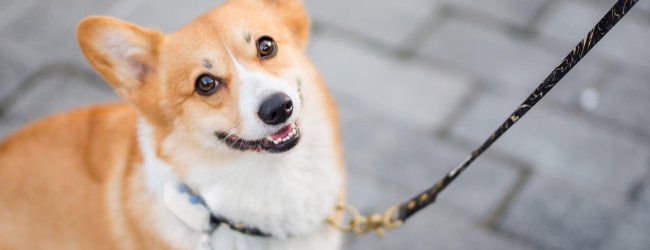Our Top Tips On How To Stop A Puppy From Biting
It's natural for a new puppy to bite a lot. But it's good to redirect this behavior to avoid someone getting hurt. Learn how to stop a puppy from biting with these training tips.
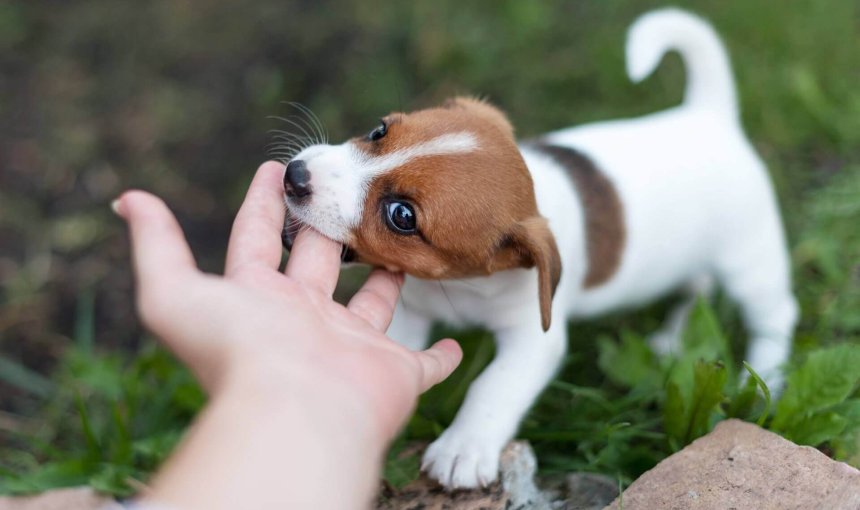
You just brought home a new puppy – congratulations! But just when you think everything’s going peachy, your little buddy bites down on you. Hard. Here are our top tips on how to stop a puppy from biting, how you can redirect this behavior, and keep them fit, happy, healthy, and safe.

Always know your buddy is healthy & safe
Read moreWhy do puppies bite?
Just like human babies, puppies learn about the world by putting things in their mouth. At about 12-16 weeks old, puppies’ adult teeth start to come in and their tiny puppy teeth fall out. During this teething period, your puppy’s gums may be sore and chewing on soft toys may relieve some discomfort. But besides that, puppies also bite to:
- Discover how objects taste,
- How hard they can bite down,
- and to decide if they should continue biting an item.
You can’t stop puppies from chewing or mouthing altogether. But you can help your puppy learn that biting your hands, feet, fingers, shoes, sofa cushions, or chair legs is not allowed.
Read more: New Puppy Checklist: Your 13-Step Guide
How to stop a puppy from biting: Our top tips
It’s best to teach your puppy to stop biting right away, before the puppy biting behavior becomes habitual and continues into adulthood. Here are a couple of tips that can help.
Keep a bunch of puppy-proof chew toys around
Choose squeaky puppy toys, a rope toy, or puppy-sized rubber ball. You can even purchase specially-made puppy teething toys which are made with softer plastic to protect the baby teeth and the new teeth coming in.
Your puppy may need some help getting started with a new chew toy, so wiggle the toy on the floor and invite your pup to engage with it. When your puppy grabs the toy, praise them plenty – or hand them a treat. These send your puppy a positive message, that it’s “good” to chew on the toy rather than your socks or shoes.
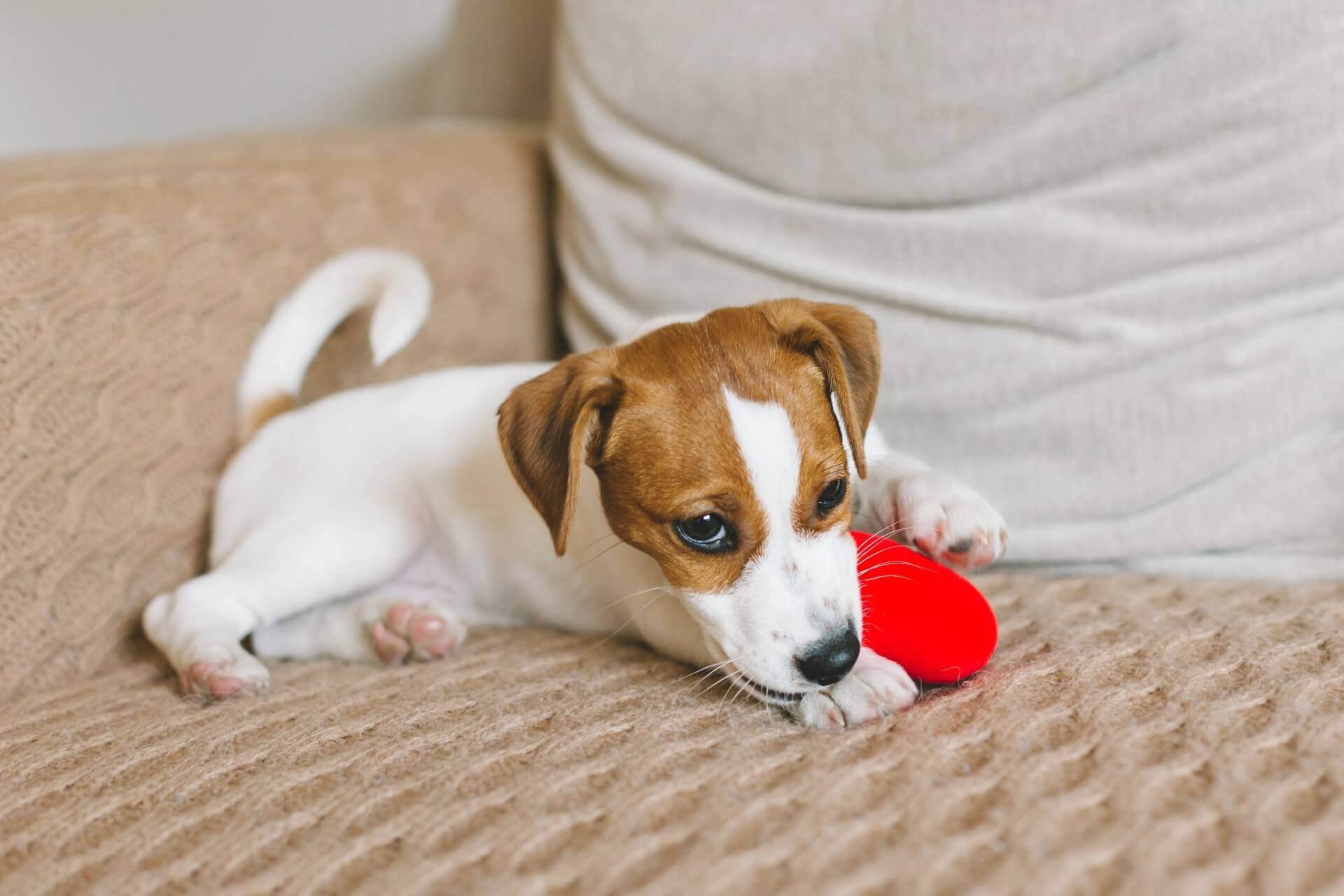
Make sure your puppy is well-exercised
Puppies have a ton of energy to burn. Wearing them out means they’re less likely to get up to mischief. Take your puppy on short walks several times a day – and don’t skip out on the playtime. Walks help them develop their senses taking in the new sights and smells along your route. Plus, a little time in nature is good for you both.
Just try and avoid roughhousing with your puppy, if you can. The message during this type of rough play is “It’s OK to bite me.” This is the exact opposite of the message you wish to send. Chose no-contact forms of play like fetch if biting is a persistent problem. Else, check out these fun indoor games for dogs to keep them happy and busy.
💡A dog GPS tracker with Health Monitoring can help you track your puppy’s active minutes, calories burned, and how much distance you’ve covered – all with a glance at your phone. You can also check how active your puppy is compared to other dogs around the world for a little healthy competition!
Don’t skip out on your puppy’s training
Training isn’t just about teaching your puppy cute tricks – it’s one of the most powerful tools you have to stop unwanted behaviors like biting. Basic obedience commands like “Sit,” “Stay,” “Leave it,” and “No” can redirect your puppy’s attention away from destructive habits and toward more positive behaviors. When your pup starts to nip or bite, a calm but firm command like “Leave it” can interrupt the behavior, helping them learn that biting is not acceptable.
Consistent training sessions also help your puppy develop self-control and focus, two essential skills for managing excitement and frustration – all common culprits behind biting. Plus, when your puppy understands what you expect from them, they’re less likely to act out or test boundaries.
Start early (you can train puppies as young as 8 weeks), keep sessions short and positive, and don’t forget to reward good behavior with treats, praise, or play. Over time, you’ll build a stronger bond with your puppy and help them grow into a well-behaved, bite-free companion.
Teach your puppy that biting means “game over”
As you interact with your new puppy, you will probably get nipped by a play bite. When this happens…
- Immediately say “Ouch!” or make a high-pitched yelp and take your hand away.
- Sit calmly and ignore your puppy in silence for about 20 seconds. This sends a strong signal to your puppy that they haven’t played nice.
- Resume playing with your puppy. If they bite again, get up and leave the room for another 20 seconds.
- Repeat this sequence each time your puppy bites you. If puppy biting happens too many times, end the play session entirely.
This process is similar to the way puppies learn about bite inhibition as they are raised in a litter. Sibling puppies will nip each other while play biting and wrestling. If they play bite too hard, their littermate will give a high-pitched yelp and step away from the play session. From these experiences, puppies learn bite inhibition and that rough play biting is not OK.
Don’t be afraid to be firm
Training your puppy is all about exhibiting firm, authoritative leadership like the alpha dog that you are. This is the foundation of basic dog obedience and behavioral dog training. By remaining firm and consistent when communicating to your puppy, you are not being mean. You are satisfying your puppy’s need to be part of a pack. They instinctively want to please you and follow your lead.
⚠️ Many puppies are rehomed due to poor behavior. Don’t let that happen to your little buddy. Take control and remember: being firm and consistent sets them up for success – for the long-run. You can always make up for it by praising and cuddling them plenty when they’re being good.
Avoid punishing your puppy
When your puppy bites you or misbehaves in some other way, you won’t get much done by punishing them, getting mad, or even yelling. (Really. It’s tempting – but you won’t.) Rather, you’ll accomplish a lot more by redirecting their behavior. If your puppy bites, you’re better off:
- Distracting them with a chew toy.
- Ignoring your puppy. Stop playing, turn your back, or leave the room. This helps your puppy understand that they haven’t behaved properly. Soon, it’ll also help them learn that they should stop the offending behavior if they want your attention.
- Doing your best not to yell or get mad. These are actually both a form of attention – even if negative! For your little buddy, attention = reward. So it won’t matter to them if you only “pay attention” to them when you’re mad. They’ll just keep at it!
Your goal during puppy training is to reinforce positive behavior. Offer an ear rub, a treat, or a “good dog” while they’re playing nice or being calm. Over time, puppies will associate calm behavior with a reward. That makes them more likely to repeat that good behavior.
Enroll in a puppy class for training success
If you’re at your wit’s end, it might just be wise to leave some jobs to the pros. Enrolling in a puppy class means you and your puppy learn from certified trainers, get to socialize with other dogs and dog parents, and have the support of a community. Playing and socializing with other dogs is a great way to help your puppy learn what behaviors are okay – and what aren’t (like mounting or biting.) They’ll also probably discover first-hand what it’s like to get nipped by another dog! These bite-inhibition lessons are part of learning how to play nicely with other dogs and people.
⚠️ Be sure that your puppy and their playmates are up to date with all their vaccinations before playing together. It’ll most likely be a requirement for any training program, but it’s always better to be prepared one step ahead.
Use a smart dog tracker
A tired puppy is a well-behaved puppy. One of the best ways to prevent biting and other mischievous behavior is to make sure your furry friend is getting enough physical activity – and that’s where a smart dog tracker like Tractive can help.
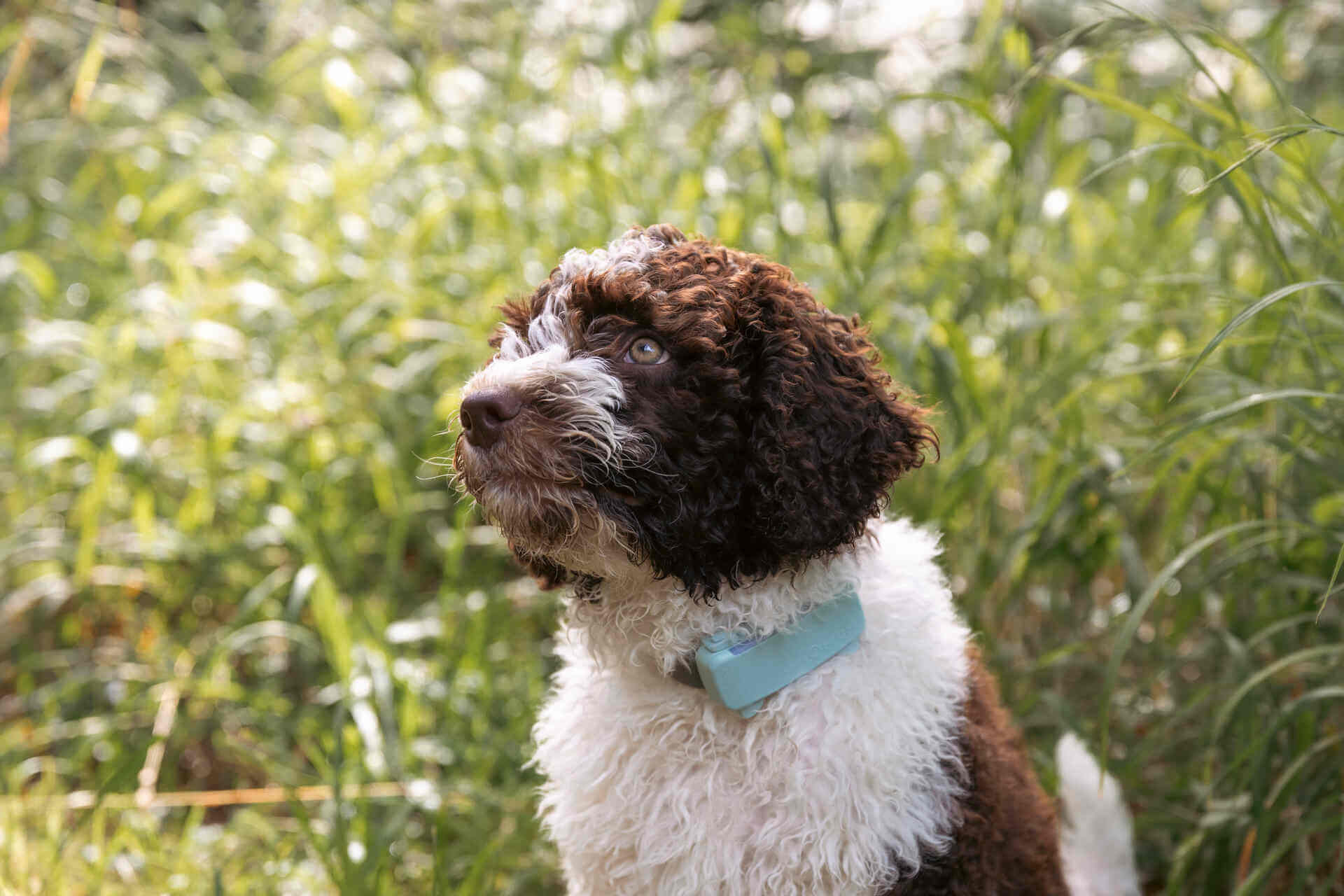
With Tractive’s GPS & Health Tracker, you can do more than just keep tabs on your pup’s location. The Health Monitoring feature gives you insight into your puppy’s daily activity levels, helping you spot whether they’ve burned off enough energy – or if they’re still raring to go (and ready to chew on something they shouldn’t). You’ll even get helpful alerts if your puppy’s activity or sleep patterns suddenly change.

Plus, if you need a little motivation, the community leaderboard lets you compare your pup’s activity with dogs in your area or around the world. It’s a fun way to stay consistent with daily walks, play sessions, and training – and keep that biting at bay by ensuring your pup stays happily tired.
After all, a well-exercised puppy is less likely to nip out of boredom or excess energy – and more likely to curl up by your side for a well-earned nap.
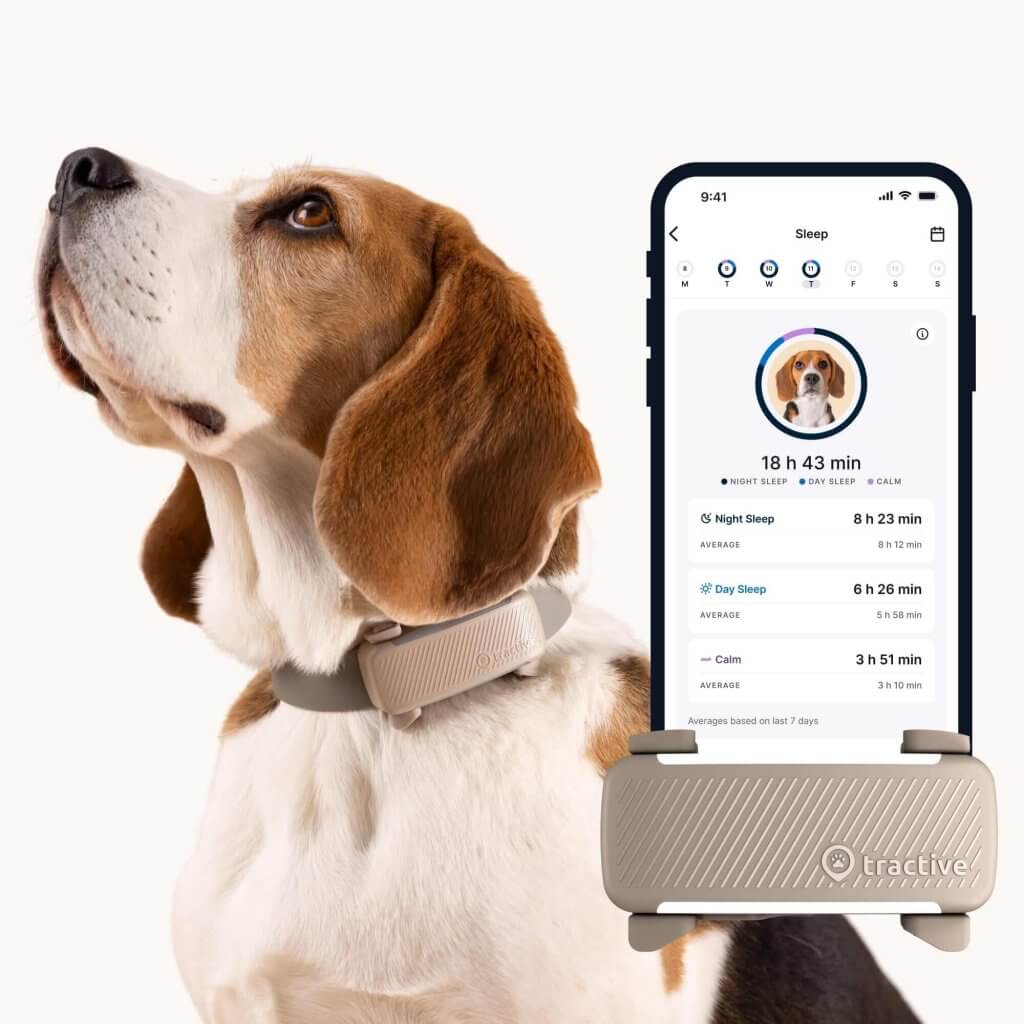
Help your dog stay fit and healthy
Get a complete overview of how much exercise and rest they’re getting. Compare their activity to that of similar dogs. Set daily goals.
And if you’ve liked this post, share it with a friend or a loved one – and let’s help build a safer, kinder world for our furry friends together.
